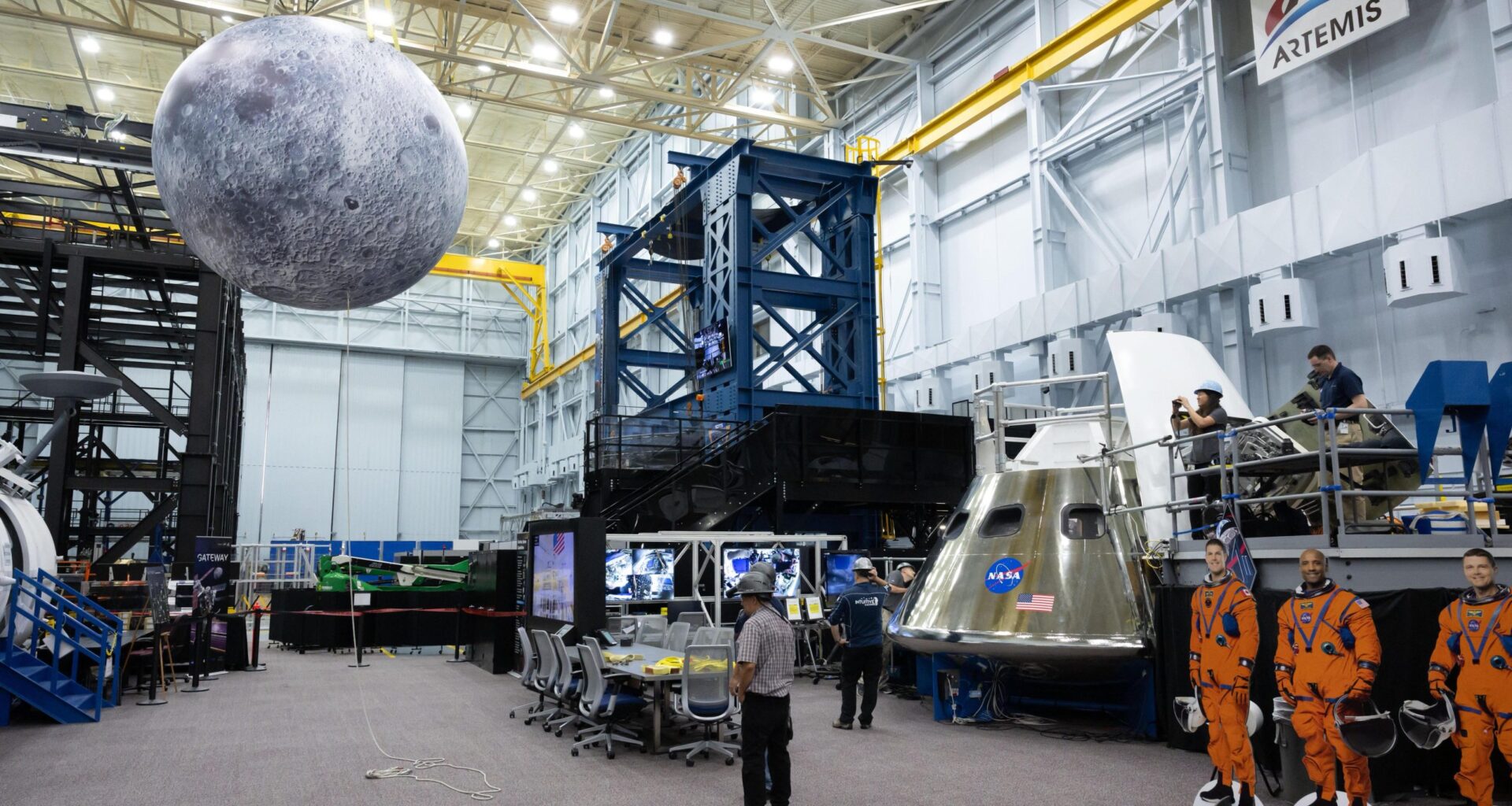With the countdown to NASA’s Artemis 2 launch in April 2026 underway, the four astronauts set to embark on the first crewed lunar mission of the Artemis programme are deep into training. Their latest exercise included something unusual: an inflatable moon.
Preparing for Lunar Photography
At the Johnson Space Centre in Houston, the astronauts tested how they would photograph the Moon while inside a mock-up of the Orion spacecraft. To recreate the challenge, engineers set up a balloon-like lunar model that mimicked the surface and lighting conditions they will see in space.
The practice runs are vital. Astronauts need to capture clear images not just for science, but also for navigation during the 10-day journey. NASA’s Goddard Space Flight Centre shared video clips of the session on X, showing how the crew and ground teams rehearsed different viewing angles and lighting scenarios.
Who’s On the Crew?
Four astronauts will take part in this milestone flight, the first crewed test of Orion. The team includes Canadian Space Agency astronaut Jeremy Hansen, along with NASA astronauts Christina Koch, Victor Glover, and mission commander Reid Wiseman.
The group has already completed several training milestones, including suiting up inside Orion for the first time. Each step builds their readiness for the challenges of deep space travel.
Why the Mission Matters
Scheduled for April 2026, Artemis 2 will send the crew on a fly-around of the Moon before returning to Earth. While no landing is planned, the mission marks a major step toward NASA’s long-term goal of a permanent human presence on the lunar surface.
Although exercises with inflatable moons may look light-hearted, they serve a serious purpose: preparing astronauts for the unexpected. These simulations give them a safe environment to refine their skills before facing the real thing in space.
![]() Published by Kerry Harrison
Published by Kerry Harrison
Kerry’s been writing professionally for over 14 years, after graduating with a First Class Honours Degree in Multimedia Journalism from Canterbury Christ Church University. She joined Orbital Today in 2022. She covers everything from UK launch updates to how the wider space ecosystem is evolving. She enjoys digging into the detail and explaining complex topics in a way that feels straightforward. Before writing about space, Kerry spent years working with cybersecurity companies. She’s written a lot about threat intelligence, data protection, and how cyber and space are increasingly overlapping, whether that’s satellite security or national defence. With a strong background in tech writing, she’s used to making tricky, technical subjects more approachable. That mix of innovation, complexity, and real-world impact is what keeps her interested in the space sector.
